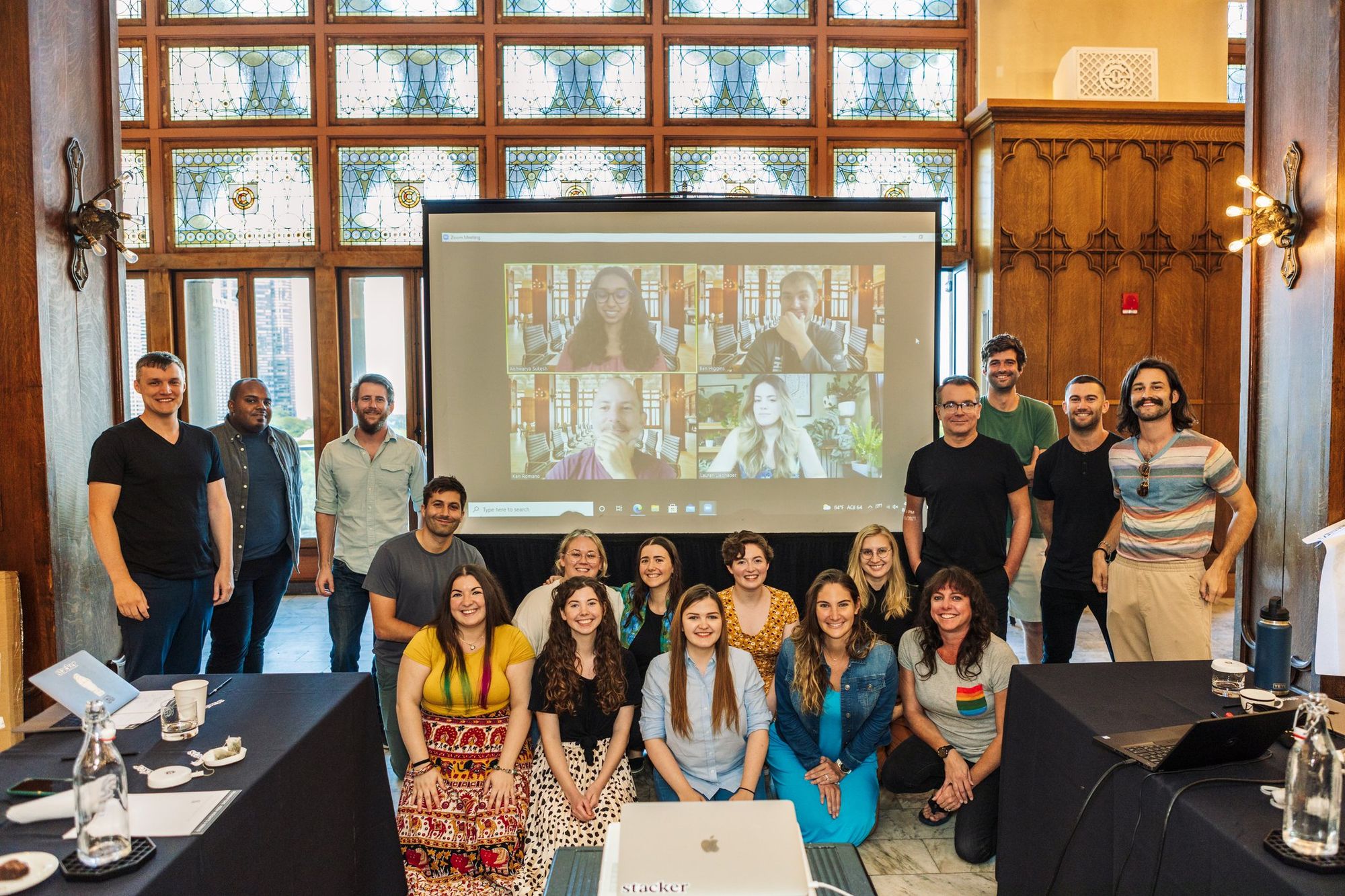Meet Stacker: A data-driven newsroom for the world's publishers

As news organizations increasingly compete with all other forms of digital news and entertainment, there is a growing need to provide a full spectrum of content for readers… but you can’t have eyes and ears everywhere. For decades, news organizations have relied on syndicated partner content to augment original reporting and offer a broader range of stories to their readers, fill coverage gaps, and keep audiences engaged for longer periods of time. But while traditional wire services like The Associated Press, Reuters, and Tribune Content Agency have done a phenomenal job of providing boots on the ground reporting from areas that new outlets might not have reporters, one of the most popular and rapidly-growing areas of journalism -- data-driven reporting -- hasn’t seen the same investment outside of individual newsrooms.
That’s why we launched Stacker, the first decentralized, data-driven newsroom, creating high quality data-centric journalism that resonates with audiences on a local, regional, and national level. Every story is made available to newsrooms, TV and radio stations around the country through our wire -- for free - letting news outlets do what they do best: report on their communities and grow their audiences.

When we started out four years ago, we had a simple goal in mind: everyone should have access to high quality, data-driven journalism in an easy to digest format, no matter where they consumed their news. We set out to build the most robust source for data-driven features, and were determined to find creative ways to provide the wire to local news outlets for free. Whether it was a hard-hitting investigative feature into election irregularities across the United States, or an algorithmic breakdown into what made the songs from the musical “Hamilton” so catchy, even by 2017 it was clear: readers trusted journalism that told a story simply, while harnessing the power of data.
But Stacker’s journalism does more than fill coverage gaps. Additional content can increase the time readers stay with a site or station, and our unique blend of data research presented in list-based format has driven an average increase of over 5 minutes per reader on Stacker stories for partners. While Stacker won’t singlehandedly solve the crises facing many local newsrooms, we’re an important tool in the toolkits of our hundred’s of news partners across the country.
How We Do It:
Today, Stacker publishes more than 20 articles per day, produced in a highly digestible, shareable format on our own website, and sends stories out every morning to our hundreds of news partners, from major media groups like Tribune Publishing, Hearst, and Nexstar to independently owned newsrooms like Las Vegas Review-Journal and Auburn Examiner. News outlets can syndicate our content just as they would an article from any other wire service, and publish it to their own sites, email lists, and social platforms within minutes. In doing so, they’ve added additional content, powered by original reporting, without having to expend the resources needed to produce data-heavy journalism. And we provide all of that content free to over 1,000 local newsrooms.
Our editorial process runs in parallel with our research team -- both led by a powerhouse team of experienced journalists and editors. Like any other newsroom, our team operates with complete editorial independence, coming up with stories and beats that they know audiences would find compelling by keeping an eye on the news, and combing through a vast array of public and private datasets in every imaginable field.
Every Stacker story starts with our research team, who use a mix of Python, Excel, and manual data gathering to analyze over 500 datasets. We pull from governmental data, private companies, non-profits, academic studies, proprietary surveys, social media analyses, and more, to ensure that we’re using the most comprehensive information available. From there, we analyze and index the data, looking for stories that stand out. We’re constantly peer-reviewing our process to craft methodologies around how we approach data for each story, and continue to innovate on how we use automation to tackle bigger data projects that we can later localize.
With the data in place, our writers and editors add depth and context by weaving in storytelling. Stacker’s diverse network of journalists dig deep into American history, scientific studies, authoritative and primary sources, and hard numbers to help readers make sense of datasets and grasp their significance. In a world rife with distrust of news sources and widespread editorializing, Stacker seeks to illuminate objective journalism and empower our readers to gain a stronger understanding of some of today’s biggest issues by sticking to the facts and the numbers.
Looking Ahead:
Four years ago, it was impossible to imagine our scope today - a 15 person newsroom producing hundreds of stories, each syndicated to a network of hundreds and hundreds of news outlets across the country. But despite the dozens of learnings, adjustments and changes we’ve had to make as we built Stacker from scratch, we’re still guided by the same questions. How can we produce the most robust source of data-driven features, made freely available to digital news organizations? And in an industry with rapidly shifting landscape and economics, how can we find creative ways to fund journalism, without jeopardizing our values?
Over the coming weeks and months we’ll be introducing you to the Stacker team, walking you through our editorial and research process, and breaking down our thoughts and hopes for how to build a sustainable media business in 2021 and beyond (spoiler alert: we’re pretty bullish on the prospect). In the meantime, please peruse our reporting at www.stacker.com or just say hi.
Interested in syndicating Stacker content for your site? Shoot us a note at publishers@stacker.com to get started.

